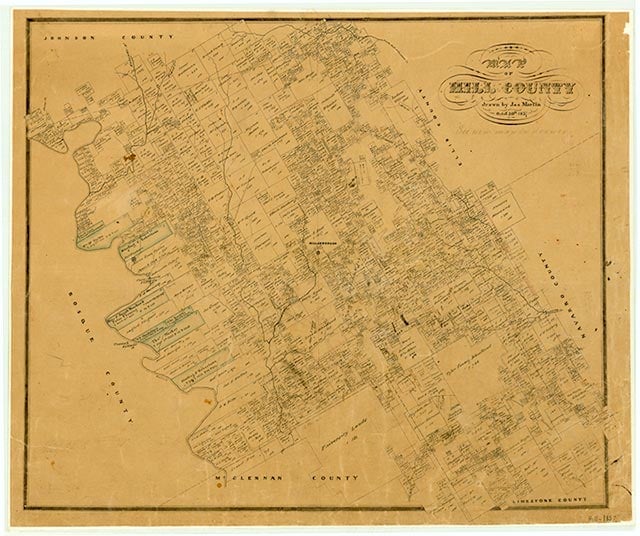Greenwade's Mills

The Stansbury Site, an archeological site, is a large occupation area on the upper terrace of the Brazos River in Hill County, Texas, two miles upstream from the Whitney Dam. It was the site of the first aboriginal dwelling to be excavated in Central Texas and is now under at least fifty feet of water of Lake Whitney. Archeological investigations here in 1947 and 1950 by the Smithsonian Institution River Basin Surveys provided a small but significant assemblage of artifacts and structural features of both Indian and White origin. Six areas totaling 4,150 square feet were excavated to depths of two to four feet. Artifacts of Indian origin included ceramics, tobacco pipes, pigment, chipped-stone tools, ground-stone tools, bone tools, shell tools, and ornaments. Artifacts of English, Spanish, and French origin included ceramics, glassware, glass beads, gun parts, bullets, knives, metal arrow points, axes, kettle sherds, brass "jingles," and scrap metal. Features included four burials, a stone wall section, concentrations of broken bones, random postholes, the Greenwade home and outbuildings, and one rectangular aboriginal dwelling with postholes surrounding a compacted floor, a stratified central firepit, a short entryway, and five small exterior storage pits. No uniform stratigraphic profile could be established for the site, but stratigraphic positions of features and artifacts were quite informative.
Four occupations were represented. The earliest was the Flechado Village of Wichita-speaking Tawakoni Indians (the Norteño Focus) of the Southern Plains dating from the mid-1770s to about 1786. This was a large settlement of more than 150 warriors visited by Athanase de Mézières in 1778; it apparently was not there when he visited the area in 1772, nor does it seem to have been there when Pedro Vial visited the area in 1786. The village was represented by the aboriginal dwelling, two burials, the Spanish and French gun parts and knives, some of the tobacco pipes, much of the aboriginal pottery, and bone, shell, and stone tools. The second occupation is less firmly founded but appears to have been the Towash Village of Caddoan speaking Hainai Indians of East Texas, dating from the mid-1830s to about 1846. Such a group, led by Chief Towash, moved out of East Texas in the mid-1830s to settle on the Brazos River. At about this time the name Towash appears in the area of the Stansbury Site. In 1846 Ferdinand von Roemer visited a Hasinai village ten miles above the Stansbury Site, but mentions no Hainai village of Towash. One burial, some aboriginal pottery, and some pottery tobacco pipes were assigned to this occupation. The third occupation was the Greenwade Farmstead, established when Jack Greenwade brought his family here in 1854 or 1856. In 1940 the Greenwades sold to J. L. Stansbury, who then sold to the United States government in 1949. The final Indian occupation was the Tonkawa camp. A small group of Tonkawa Indians attached themselves to the fringe of the White settlements for economic support and for protection from the Comanches to the west. One burial, numerous glass beads, and some of the scrap-metal artifacts, such as arrow points, were assigned to this occupation. This occupation began in the mid-1850s and presumably ended by 1870, when the Indians of this area were removed to Oklahoma Territory.
Robert L. Stephenson | © TSHA

Adapted from the official Handbook of Texas, a state encyclopedia developed by Texas State Historical Association (TSHA). It is an authoritative source of trusted historical records.

- ✅ Adoption Status:
Belongs to
Greenwade's Mills is part of or belongs to the following places:
Currently Exists
No
Place type
Greenwade's Mills is classified as a Town
Associated Names
- (Towash)
Has Post Office
No
Is Incorporated
No
